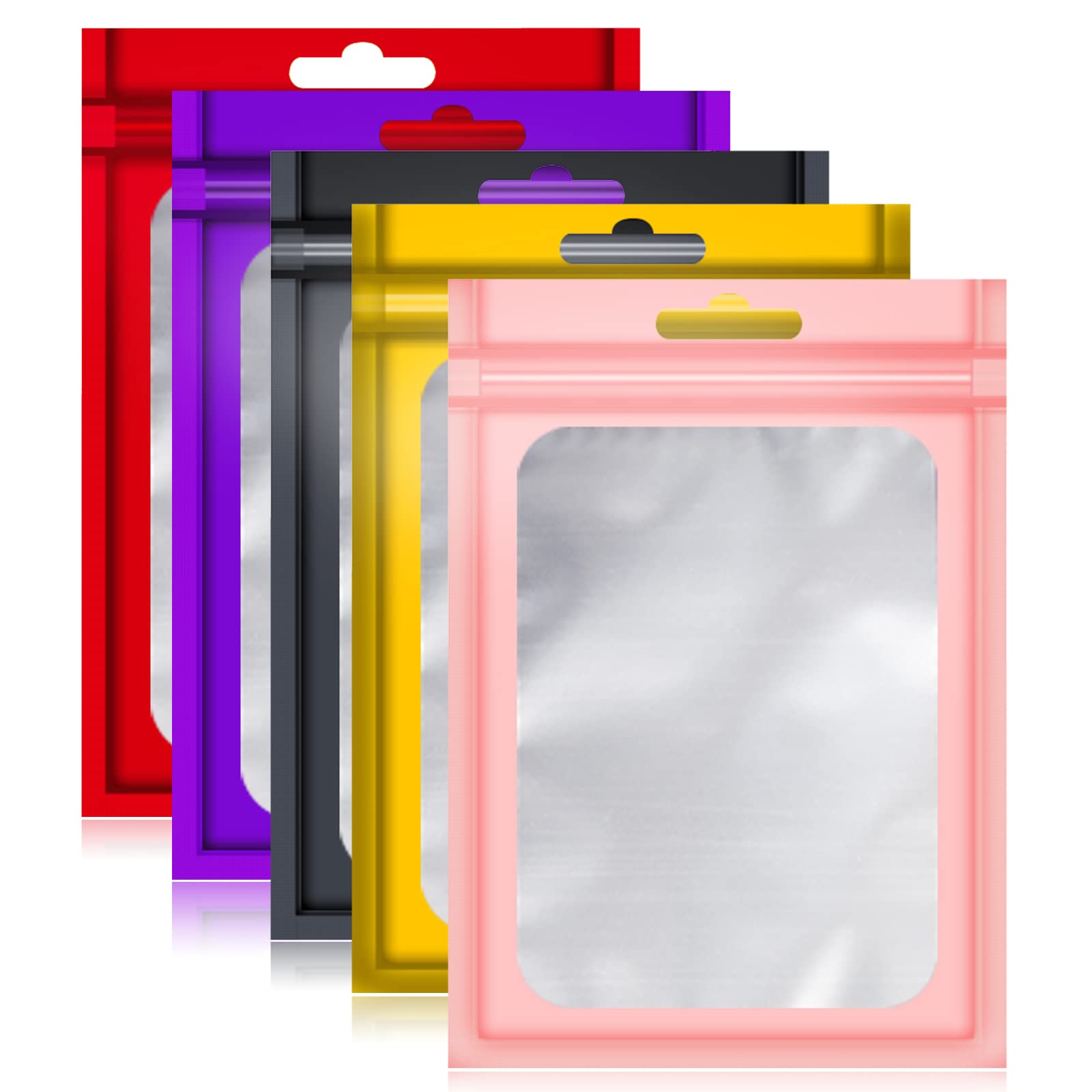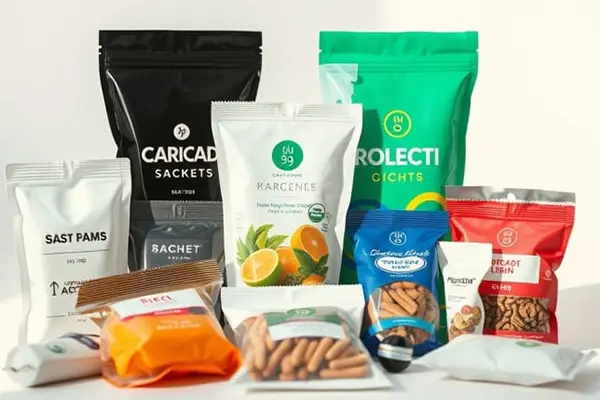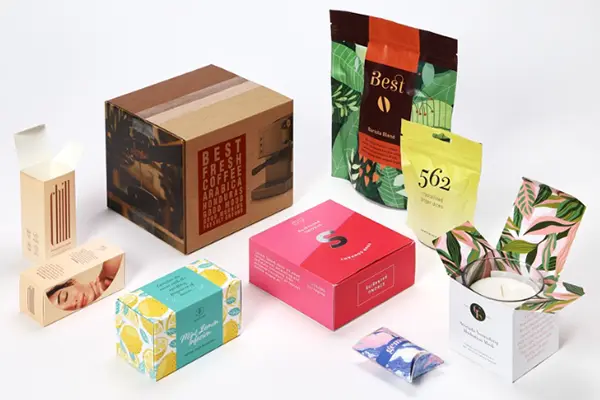Flexible packaging applications are revolutionizing how products are protected, preserved, and presented to consumers. This article delves deep into the benefits and applications of flexible packaging, exploring its versatility across various industries and its role in driving sustainable packaging practices. From enhancing brand image to minimizing environmental impact, discover why packaging solution is a game-changer for businesses.
1. What are the Core Applications of Flexible Packaging?
Applications of flexible packaging are incredibly diverse, spanning numerous industries and product types. Flexible packaging refers to packaging made from materials that can conform to the shape of the product it contains, unlike rigid packaging. This type of packaging is used extensively for everything from food and beverage products to cosmetics and pharmaceuticals. The nature of flexible packaging allows for a wide array of shapes, sizes, and functionalities, making it an adaptable packaging option for many applications.
The core applications of flexible packaging include preserving freshness and extending the shelf life of food products, providing convenient and portable packaging for on-the-go consumption, and enhancing brand visibility through custom printing and design. They are also used extensively for non-food items, such as personal care products, cleaning supplies, and pet food. By minimizing material use, they contribute to sustainability goals, making them a preferred choice for businesses aiming to reduce their environmental impact.

Flexible packaging often includes pouches, sachets, flow wraps, and shrink sleeves. The packaging industry has widely adopted these solutions for their ability to offer product protection, aesthetic appeal, and cost-effectiveness. Packaging is one of the most critical stages in the product journey, acting as both a protector and a marketing tool.
2. How Does Flexible Packaging Benefit Brand Identity and Marketing?
One of the significant benefits and applications of flexible packaging lies in its ability to boost brand identity and facilitate effective marketing. The packaging design of a product is the first interaction a consumer has with a brand, making it critical for attracting attention and conveying the brand’s message. Flexible packaging offers extensive possibilities for customization through high-quality printing techniques, allowing for vibrant graphics, intricate designs, and the inclusion of essential brand information.
Brand recognition increases with distinct and eye-catching packaging designs. Custom-printed pouches, for example, can incorporate a brand’s logo, colors, and imagery, creating a memorable and impactful presence on the shelf. Furthermore, the versatility of flexible packaging allows for the integration of features that enhance the consumer experience, such as resealable closures or convenient tear notches.
Furthermore, the versatility allows for tailoring the design to the specific needs of various demographics, increasing consumer engagement. The enhanced appearance and convenience of flexible packages contribute to a positive perception of the brand, fostering brand loyalty and driving sales in the competitive market.
3. Flexible Packaging in the Food and Beverage Sector: Preserving Freshness and Extending Shelf Life.
The food industry is one of the primary applications across where flexible packaging truly shines. The ability to maintain freshness, extend shelf life, and preserve the quality of food products is paramount. Flexible packaging solutions provide an exceptional barrier against oxygen, moisture, and light, which are the main contributors to food waste. By minimizing the environmental impact, packaging helps reduce the food waste, making it a valuable asset for both manufacturers and consumers.
Flexible packaging offers a wide range of options for the food and beverage sector. Pouches, sachets, and film wraps are commonly used for products ranging from snacks and ready meals to beverages and condiments. Packaging materials can be tailored to meet the specific preservation needs of the product. For example, multi-layer films can offer superior barrier properties, while vacuum sealing can further extend shelf life by removing air.

One of the key benefits and applications of flexible packaging in this sector is the ability to minimize the environmental impact. Compared to rigid packaging, flexible packaging often uses less material, leading to reduced material use and lower transportation costs. Packaging solutions are becoming a key element for a sustainable packaging industry in the food industry.
4. Sustainability in Packaging: Addressing the Environmental Impact of Flexible Materials.
Sustainability is a driving force in today’s packaging industry, and flexible packaging is at the forefront of sustainable packaging solutions. While the environmental impact of flexible materials is a valid concern, significant advancements are being made to improve the sustainability of these solutions. Flexible packaging often uses less material than traditional rigid packaging, resulting in reduced material use and a smaller carbon footprint.
Sustainable packaging options include the use of recycled content, biodegradable materials, and compostable films. Many packaging manufacturer are investing in innovative materials and technologies that minimize material use and reduce environmental impact. Furthermore, improvements in waste management infrastructure and consumer education play a crucial role in the lifecycle of flexible packaging.
The shift towards sustainable packaging is driven by consumer demand, corporate responsibility initiatives, and government regulations. For businesses, adopting sustainable packaging can enhance brand image, attract environmentally conscious consumers, and reduce long-term costs. As the packaging industry continues to evolve, sustainability will remain a core packaging need with many flexible packaging applications.
5. What Packaging Needs Does Flexible Packaging Address Across Various Industries?
Flexible packaging addresses a diverse array of packaging needs across a multitude of applications across many industries. In the food industry, it focuses on preserving product freshness, extending shelf life, and providing convenient packaging options. In the cosmetics and personal care sector, flexible packaging is used to create attractive, portable, and tamper-evident solutions for products ranging from lotions and creams to makeup and samples.
The pharmaceutical industry utilizes flexible packaging for safe and secure containment of medications, ensuring product integrity and patient safety. Cleaning product suppliers employ flexible packaging for convenient and safe storage and dispensing of liquids and powders. Also, it is a great packaging solution for pet food. Flexible packaging offers excellent moisture and oxygen barrier properties, essential for maintaining the quality and extending the shelf life of various food products.
The ability of flexible packaging to conform to product shapes and offer custom printing options makes it a perfect choice for promotional products and brand marketing initiatives. The versatility of flexible materials allows for the creation of innovative features such as resealable closures, pour spouts, and tear notches, increasing consumer convenience and product usability.
6. Flexible Packaging vs. Rigid Packaging: A Comparative Analysis.
When evaluating different type of packaging, it’s crucial to compare flexible packaging with rigid packaging to understand their respective strengths and weaknesses. Rigid packaging (such as glass bottles, metal cans, and plastic containers) offers superior protection against physical damage and may be preferred for products that require structural integrity. However, flexible packaging often offers several advantages.
Flexible packaging often uses less material than its rigid counterparts, leading to reduced waste and lower transportation costs. For example, a pouch requires significantly less material than a glass jar to package the same amount of product. The lighter weight of flexible packages translates to lower shipping costs and a reduced carbon footprint.
Also, flexible packaging is highly adaptable and can be designed in various shapes and sizes to meet specific packaging needs.

Unlike rigid packaging, flexible packaging allows for extensive custom printing and graphic design possibilities, making it a powerful tool for branding and marketing. Also, the versatility of flexible materials is a great packaging solution.
While rigid packaging may be suitable for certain applications, the advantages of flexible packaging (including reduced material use, lower costs, and enhanced brand visibility) make it a preferred choice for many products across various industries.
7. The Versatility of Flexible Packaging and its Various Forms: Pouches, Sachets, and More.
The versatility of flexible packaging is one of its most compelling features, allowing it to take on a variety of forms to meet diverse packaging needs. The pouch is a highly adaptable form of packaging, available in various styles like stand-up pouches, flat pouches, and gusseted pouches. They are often used for snacks, coffee, and pet food. Sachets are small, single-serving packets commonly used for condiments, seasonings, and personal care samples.
Another type is the sachet, which is a flexible option for individual portions and single servings. Flow wraps are used to enclose individual items. Shrink sleeves offer a tight, tamper-evident fit around containers and products, while film wraps can be used to bundle multiple items together or protect products during shipping.
The packaging design can be customized to suit the product, which, as a result, offers both protection and visual appeal. Flexible packaging allows for a range of packaging option, offering businesses the flexibility to create highly functional and attractive solutions that meet their packaging needs.
8. What are the Materials Used in Flexible Packaging and their Properties?
The materials used in flexible packaging are designed to provide a combination of protection, functionality, and aesthetic appeal. These include:
- Plastics: Polyethylene (PE) is one of the most common, offering excellent moisture resistance, flexibility, and cost-effectiveness. Polypropylene (PP) provides a good barrier against moisture and gases.
- Films: Polyester (PET) offers excellent strength, clarity, and barrier properties. Oriented polypropylene (OPP) is known for its clarity and stiffness.
- Aluminum Foil: Provides a superior barrier against light, moisture, and oxygen, making it ideal for preserving the freshness of food products.
- Eco-Friendly Materials: Includes biodegradable films made from plant-based resources.
- Paper-Based Materials: Used for dry goods, offering a sustainable packaging solution.
- Coating and Adhesives: Many flexible materials often require additional coatings to enhance their barrier properties. Adhesives are used to bond the different layers.
The choice of materials determines the properties of the packaging, including its barrier performance, strength, flexibility, and appearance. The ability to combine different flexible materials in a multi-layer structure allows for tailored packaging solutions that meet very specific product requirements. Understanding the properties of different flexible materials is essential for designing effective and sustainable packaging that meets the needs of the product and the consumer.
9. How Does Packaging Design Influence the Effectiveness of Flexible Packaging?
Packaging design plays a crucial role in the effectiveness of flexible packaging, impacting everything from product protection and preservation to brand appeal and consumer experience. An effective packaging design ensures the product safety by protecting against external elements, while also enhancing the brand‘s message. In a competitive market, the packaging design can create shelf appeal, which is critical for attracting consumers.
The design of flexible packages must consider the product’s packaging needs, including its fragility, shelf life requirements, and the need for convenient dispensing or resealing features. For example, packaging for food products must ensure a complete seal, with a tamper-evident design, to maintain freshness.
The packaging design should also integrate clear and concise labeling, including product information, ingredients, and brand messaging. Custom printing techniques allow for high-quality graphics and branding elements, helping to create a memorable visual impression.
10. What is the Future of Packaging with Flexible Packaging Solutions?
The future of packaging is likely to be dominated by flexible packaging solutions, given its adaptability, sustainability, and versatility. The flexible packaging market is expected to continue to grow, driven by consumer demand for convenience, portability, and eco-friendly options.
Sustainable packaging is becoming increasingly important. The ongoing trend towards more sustainable packaging solutions will drive innovation in material use, with greater use of biodegradable and compostable materials.
Packaging is becoming more intelligent with the emergence of smart packaging, which includes sensors and other technologies to monitor product condition, track its location, and provide real-time information to consumers. Smart packaging will enhance product safety, reduce food waste, and improve overall supply chain management. Also, the design will evolve with more innovative shapes and forms, offering new ways to showcase products.
The flexible packaging sector is poised to continue to evolve, responding to the changing needs of consumers, brands, and the environment. Many businesses are adopting these packaging solutions for their ability to provide protection, enhance brand appeal, and minimize their environmental impact.
Key Takeaways:
- Applications of flexible packaging are expansive, ranging across various sectors and industries.
- Flexible packaging significantly contributes to brand identity through customizable designs and printing options.
- Flexible packaging is crucial in the food and beverage sector, providing long-term product freshness and extended shelf life.
- Sustainability is a core driver of innovation, with increasing focus on the use of sustainable packaging and minimizing environmental impact.
- The versatility of flexible packaging offers a broad range of styles and material options to address diverse packaging needs.
- The future of packaging is promising for flexible packaging, fueled by sustainability concerns and technological advancements.
- Explore our range of flexible packaging solutions for your products: Soft Services Packaging Accordion Pouch Bags, Cosmetics Packaging Back-Sealed Pouch Bags, China Plastik Packaging Envelope Pouch
- Contact us today for your flexible packaging needs and learn how we can help you enhance your brand and product presentation.
Post time: 02-20-2025

